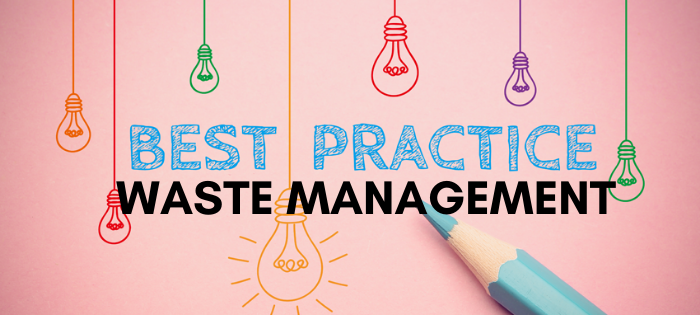
Environment
Comments: No Comments
BIOTECHNOLOGY FOCUS
Identifying and managing your wastes is not a task to be taken lightly. If waste is incorrectly managed, there are regulatory compliance risks, exposure risks, and potential financial penalties that can impact your business. Given these risks, effective waste management requires investments of time, money, and resources. However, if you are proactive in your efforts to inventory your wastes, understand your requirements, and develop a plan to manage your inputs and outputs, it is possible to turn those investments into value for your organization.
The following six best practices can help ensure you are you managing your waste correctly, efficiently, and cost-effectively—and that you can sustain those efforts for the long term:
1. Inventory your wastes – Biotech labs and industrial processes traditionally produce many different types of waste that can present significant waste management challenges. A methodical, analytical approach to characterizing and evaluating waste can substantially improve efficiencies when it comes to handling waste and minimize the risks of improper waste management. This is done through an EPA-required waste determination. In addition to reviewing chemicals that are used in processes and the different types of risk they present, a waste determination should evaluate allwaste being generated by processes throughout the facility.
2. Understand your compliance requirements – The Environmental Protection Agency (EPA) regulates much of the waste generated by industry. Over the past ten years, the Agency has demonstrated an even stronger focus on labs. Additional regulatory agencies that oversee lab and industry operations include the Occupational Safety & Health Administration (OSHA), Department of Transportation (DOT), Department of Homeland Security (DHS), fire department, and others depending upon the type of work being done, chemicals being used, and resulting end products. The waste scenarios seen in labs and industry are countless, and each may hold associated regulatory compliance requirements. While this clearly presents business risks, it also provides a unique opportunity to create strategies to manage wastes more effectively and efficiently, improve safety, and reduce the potential costs of regulatory compliance.
3. Understand your business processes – Companies who want to proactively manage their waste need to go through the process of understanding where your waste fits into your business processes—and what you need to do with not only your waste, but also your operations, to minimize risk, reduce costs, and ensure compliance. Having business and production processes mapped out helps companies improve the interconnected set of processes, sub-processes, activities, and tasks that allow the business to manage waste most effectively. A thorough review of business and operational processes and the waste being generated further creates the opportunity for a “bottom-to-top” evaluation of all regulatory compliance. It is a process of understanding what you have, where it fits, and what you need to do with it to minimize risk, reduce costs, and ensure compliance.
4. Get the right parties trained – One of the most common violations identified by both DOT and EPA is failure of personnel signing hazardous waste manifests to have appropriate DOT hazardous waste training. Failure to meet this training requirement can result in substantial financial penalty. Perhaps even more important, lack of training may also impact the understanding of employees in how to correctly—and safely—perform their duties. There are many people who touch waste at various points in the process and they all need to be trained on how to work with it in a manner that is safe and compliant with regulatory requirements.
5. Develop waste management strategies – Are there waste streams that you are paying too much to manage? Are there alternatives to the reagents or kits you are using that may minimize your risk and improve safety in your lab? Are there strategies that can make waste management simpler, more cost-effective, and more compliant that you could implement in your lab? As key indicators of waste quantities are identified, strategies for internal process changes that can minimize waste generation can be implemented.
When developing your strategies, focus on managing waste as close to the source(s) as possible. There are frequently alternatives to hazardous, universal, biohazardous, and special waste management that will minimize risk and improve financials. These waste minimization strategies need to be identified and evaluated to determine their applicability and potential impacts. Options that Kestrel has investigated and assisted with implementing include:
- Treating hazardous waste to minimize quantities for disposal
- Recycling used solvents through evaporation and reclamation strategies
- Solidifying nonhazardous waste waters with associated subtitle D landfilling
6. Establish a system to sustain ongoing compliance – Documenting waste management procedures and processes, along with management oversight and continual review and improvement, is key to ensuring ongoing compliance. Technology (i.e., a compliance information management system (IMS), apps, tools) can help create process standardization, operational efficiencies, and, subsequently, consistent and reliable compliance/waste management performance. Do you have permitting requirements? Does your staff need training? How do you maintain your records? Are there regular (e.g., annual, semi-annual) plans and/or reports you need to submit? Do you have routine inspections and monitoring? All these things can and should be built into a compliance IMS so they can be managed more efficiently.
Through an evaluation of chemicals onsite, development of an inventory of both chemicals used and waste generated, and identification of processes to efficiently and effectively manage waste, businesses/labs can ensure they understand and meet their EHS regulatory obligations in the most efficient ways possible.
